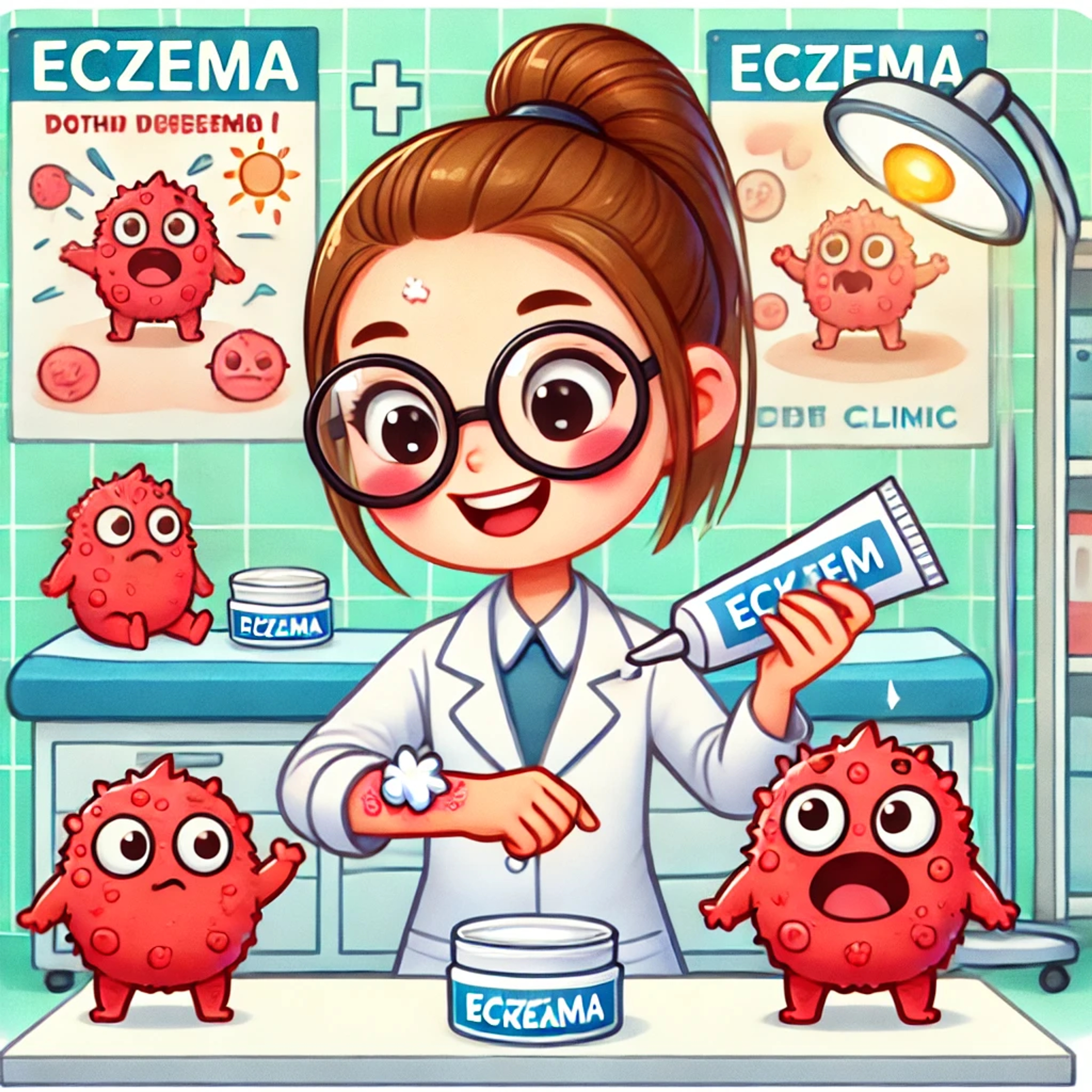6/6/2025
Managing Eczema with Compounded Topicals: A Clinical Guide for Physicians

What Is Eczema?
Eczema, or atopic dermatitis, is a chronic inflammatory skin condition characterized by episodic flares of pruritus, erythema, scaling, and lichenification. It is part of the atopic triad (along with asthma and allergic rhinitis) and reflects a complex interplay between genetic, immunologic, and environmental factors. Eczema is not a single disease but a spectrum of inflammatory skin conditions that require individualized treatment strategies.
Pathophysiology: The Underlying Immune Dysfunction
Eczema arises from a combination of epidermal barrier dysfunction and immune dysregulation. Key physiological features include:
- Filaggrin gene mutations, leading to a compromised skin barrier and increased transepidermal water loss
- Th2-skewed immune response, with elevated IL-4, IL-13, and IgE levels
- Colonization with Staphylococcus aureus, often contributing to inflammation and secondary infection
- Heightened mast cell activity, promoting pruritus and dermal reactivity
This pathophysiology supports a dual treatment approach: barrier repair and inflammation modulation, often in combination with antimicrobial or immunosuppressive strategies.
Who Gets Eczema?
- Children: Onset before age 5 is common; many outgrow symptoms but may develop other atopic disorders
- Adults: Adult-onset eczema or persistent childhood eczema can be more severe and treatment-resistant
- At-risk Populations: Individuals with a personal or family history of atopic diseases, or those living in urban or cold climates, have higher prevalence
Clinical Features
Common Symptoms:
- Intense itching
- Red, scaly patches (flexural areas in children; face, neck, or hands in adults)
- Xerosis (dry skin), cracking, and oozing
- Chronic lesions may become lichenified
When to Refer:
- Dermatologists: For moderate-to-severe disease, treatment failures, or use of systemic agents
- Allergists/Immunologists: When eczema is associated with food allergies, asthma, or requires biologic therapy
- Primary Care/Family Medicine: Initial diagnosis and mild disease management
Topical Treatment Options and Compounding Strategies
1. Atopic Eczema with Secondary Infection
eNavvi Compound: Betamethasone Valerate 0.1% / Mupirocin 2% Cream or Ointment
Mechanism:
- Betamethasone Valerate: Medium-potency corticosteroid; reduces inflammation and pruritus
- Mupirocin: Topical antibiotic targeting S. aureus colonization
Use Case: - Ideal for weeping, infected, or impetiginized lesions
- Choose cream for acute, moist lesions; ointment for dry or lichenified areas
Cautions: - Limit long-term use of topical steroids to avoid atrophy
- Monitor for bacterial resistance with prolonged mupirocin use
Available at:
- Foothills Professional Pharmacy – $35.00 / 30 Days – 2 Day Nationwide Shipping
2. Scalp Eczema / Seborrheic Dermatitis
eNavvi Compound: Clobetasol Propionate 0.055% Oil Suspension
Mechanism:
- Super-potent corticosteroid; anti-inflammatory and antiproliferative
- Oil base facilitates penetration through hair and sebaceous glands
Use Case: - Recalcitrant scalp eczema, seborrheic dermatitis, or psoriasiform flares
Cautions: - Limit to short-term use (2–4 weeks) due to risk of local and systemic corticosteroid side effects
- Avoid in infants and on thin skin areas
Available at:
- Foothills Professional Pharmacy – $35.00 / 30 Days – 2 Day Nationwide Shipping
3. Scalp Eczema with Steroid Sensitivity or Long-Term Management
eNavvi Compound: Tacrolimus 0.12% Solution
Mechanism:
- Calcineurin inhibitor; inhibits T-cell activation without skin thinning
Use Case: - Steroid-sparing maintenance for scalp and facial eczema
- Preferred in sensitive skin areas like the eyelids, neck, or intertriginous zones
Cautions: - Transient burning or stinging upon application
- Black box warning for potential cancer risk (based on animal studies); long-term human risk unproven
Available at:
- Foothills Professional Pharmacy – $35.00 / 30 Days – 2 Day Nationwide Shipping
Choosing the Right Topical Based on Clinical Presentation
PresentationRecommended CompoundRationaleInfected, crusted lesionsBetamethasone/MupirocinCombines anti-inflammatory and antimicrobial actionThick scalp plaquesClobetasol OilDeep follicular penetration for stubborn lesionsSteroid-sensitive skin or long-term useTacrolimus SolutionSteroid-sparing, no skin thinningAcute flare on face or flexuresBetamethasone/Mupirocin (short-term)Control inflammation, prevent bacterial superinfection
Conclusion
Eczema management requires a personalized approach based on disease severity, location, comorbidities, and response to previous treatments. Compounded topical therapies through eNavvi allow for customization, cost-efficiency, and expedited delivery, giving clinicians and patients access to high-quality, pharmacist-vetted formulations. With options like betamethasone-mupirocin creams, clobetasol oils, and tacrolimus solutions, podiatrists, dermatologists, and primary care providers alike can tailor treatment to optimize outcomes for every patient.
